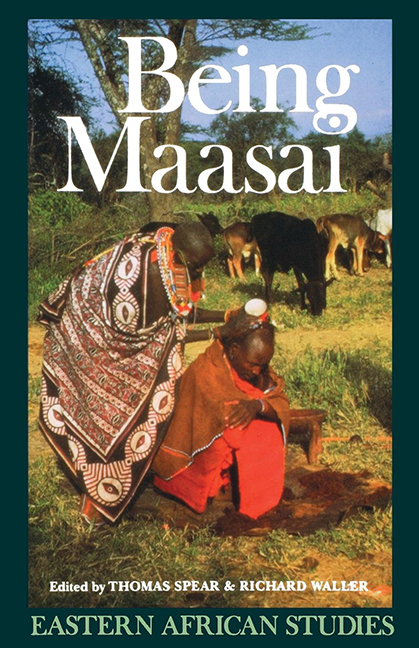Book contents
- Frontmatter
- Contents
- Maps, Figures & Illustrations
- Contributors
- Acknowledgements
- I Introduction
- II Becoming Maasai: Introduction
- 1 Dialects, Sectiolects, or Simply Lects? The Maa Language in Time Perspective
- 2 Becoming Maasailand
- 3 Maasai Expansion and the New East African Pastoralism
- 4 Aspects of ‘Becoming Turkana’: Interactions and Assimilation Between Maa- and Ateker-Speakers
- 5 Defeat and Dispersal: The Laikipiak and their Neighbours at the End of the Nineteenth Century
- 6 Being ‘Maasai’, but not ‘People of Cattle’: Arusha Agricultural Maasai in the Nineteenth Century
- III Being Maasai: Introduction
- IV Contestations and Redefinitions: Introduction
- V Conclusions
- Bibliography
- Index
3 - Maasai Expansion and the New East African Pastoralism
from II - Becoming Maasai: Introduction
Published online by Cambridge University Press: 30 August 2017
- Frontmatter
- Contents
- Maps, Figures & Illustrations
- Contributors
- Acknowledgements
- I Introduction
- II Becoming Maasai: Introduction
- 1 Dialects, Sectiolects, or Simply Lects? The Maa Language in Time Perspective
- 2 Becoming Maasailand
- 3 Maasai Expansion and the New East African Pastoralism
- 4 Aspects of ‘Becoming Turkana’: Interactions and Assimilation Between Maa- and Ateker-Speakers
- 5 Defeat and Dispersal: The Laikipiak and their Neighbours at the End of the Nineteenth Century
- 6 Being ‘Maasai’, but not ‘People of Cattle’: Arusha Agricultural Maasai in the Nineteenth Century
- III Being Maasai: Introduction
- IV Contestations and Redefinitions: Introduction
- V Conclusions
- Bibliography
- Index
Summary
In debates over the role of the Maasai in the history of East African pastoralism several questions recur that are central to our understanding of how economies and societies of the region emerged and were transformed. First, when and in what way did the practice of specialized pastoralism first arise in East Africa and become consolidated as an organized system of production? Second, when and how did communities of Maa-speakers expand and move southward to occupy much of the East African Rift Valley region, and how was this expansion related to their, specialized pastoral organization and technology? And, thirdly, when and by what process did Maasai territorial units coalesce and a distinctive Maasai identity or ethnic consciousness emerge? Much of the evidence bearing on these questions is fragmentary, coming as it does from the diverse disciplines of historical and comparative linguistics, archaeology, oral history and anthropology, whose methods and assumptions do not always mesh.
This chapter will deal not only with what is known about the history of specialized pastoralism and Maasai expansion but also with the debates about how current knowledge should be construed and interpreted. For instance, it is evident from the cultural geography of the recent past that, by the mid-nineteenth century, Maa-speaking peoples inhabited a vast area stretching from north of Lake Turkana in what is now southern Ethiopia through Kenya to central Tanzania. The Rift Valley itself provided a north-south axis of Maasai occupation and a corridor for their expansion. The Rift Valley region, however, comprises a more diverse economic geography. It is transected by the actual semiarid valley but includes highland forests and plateaus, and it is integrated into a single system through mobile resource use or trade (Waller, 1985b). But does the current Maasai distribution represent the outcome of an expansionary intrusion throughout the Rift Valley region of a discrete people over a relatively short period of time or a more diffuse and osmotic process whereby a language and a culture spread through previously existing communities, with the emergent societies assuming different forms depending on the social and linguistic fabric of those assimilated? And did Maa-speakers develop highly specialized pastoralism and then introduce it into East Africa through their expansion, or did they merely adopt and refine the specialized pastoral practices of their predecessors?
- Type
- Chapter
- Information
- Being MaasaiEthnicity and Identity in East Africa, pp. 61 - 86Publisher: Boydell & BrewerPrint publication year: 1993

